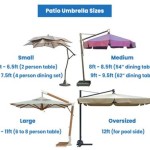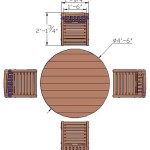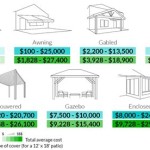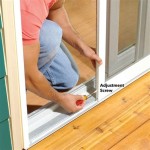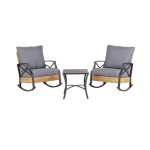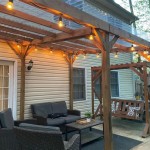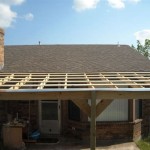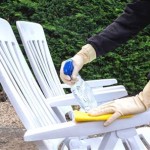String Lighting for Patio: Illumination and Ambiance
Outdoor string lighting represents a versatile and aesthetically pleasing method for illuminating patios, decks, and other outdoor living spaces. These lights offer a range of benefits, from enhancing ambiance to providing functional task lighting, ultimately contributing to a more enjoyable and usable outdoor environment. The selection and proper installation of string lights require careful consideration of various factors, including light source, string type, power source, and overall design.
Understanding Different Types of String Lights
String lights are available in a diverse array of styles, each characterized by its unique light source, design, and intended application. The most common types include incandescent, LED, and solar-powered string lights. Each type presents its own advantages and disadvantages regarding energy efficiency, lifespan, and brightness.
Incandescent string lights are the traditional option, characterized by their warm, soft glow. While they offer a classic aesthetic, they are less energy-efficient than LED alternatives and have a shorter lifespan. This translates to higher energy bills and the need for more frequent bulb replacements. Incandescent bulbs also generate more heat, which can be a safety concern, especially when used near flammable materials.
LED string lights have become increasingly popular due to their superior energy efficiency and extended lifespan. They consume significantly less energy than incandescent bulbs, resulting in lower electricity costs and reduced environmental impact. LED lights also produce less heat, making them a safer option for outdoor use. Furthermore, LED string lights are available in a wide range of colors and styles, offering greater design flexibility. The initial cost of LED string lights may be higher, but their long-term savings and durability often make them the more cost-effective choice.
Solar-powered string lights provide a completely wireless lighting solution, drawing their power from sunlight. These lights are ideal for areas where access to electrical outlets is limited or unavailable. Solar string lights typically feature a solar panel that collects sunlight during the day, charging a rechargeable battery. The battery then powers the lights at night. The brightness and duration of solar-powered string lights depend on the amount of sunlight they receive, making them less reliable in shaded areas or during periods of prolonged cloud cover. The battery life of solar lights can also shorten over time, requiring eventual replacement.
Beyond the light source, string lights also vary in bulb shape, size, and spacing. Globe lights, Edison-style bulbs, and miniature fairy lights are just a few of the available options. The choice of bulb style should complement the overall aesthetic of the patio and the desired ambiance. The spacing between bulbs also affects the overall brightness and visual impact. Closer spacing creates a denser, brighter light, while wider spacing produces a more subtle, distributed illumination.
Factors to Consider When Choosing String Lights
Selecting the appropriate string lights for a patio involves considering several factors to ensure optimal performance and aesthetic appeal. These factors include the desired brightness, the size and layout of the patio, the power source, and the weather resistance of the lights.
The desired brightness of the string lights will depend on the intended use of the patio. For ambient lighting, lower wattage bulbs or dimmer settings are suitable. If the patio is used for activities that require more light, such as reading or dining, brighter bulbs or a higher density of lights may be necessary. It's important to consider the existing lighting in the area and choose string lights that complement rather than overpower the overall illumination.
The size and layout of the patio will influence the length and configuration of the string lights. For smaller patios, a single strand of lights may be sufficient, while larger patios may require multiple strands or a more complex lighting arrangement. Consider the placement of furniture and other patio elements when planning the string light layout. The lights should be positioned to enhance the overall design and avoid obstructing pathways or creating unnecessary glare.
The power source is another crucial consideration. If electrical outlets are readily available, plug-in string lights are the most convenient option. For patios without access to outlets, solar-powered string lights or battery-operated lights may be necessary. When using plug-in lights, it is essential to ensure that the outlet is properly grounded and protected from the elements. Extension cords should be specifically designed for outdoor use and rated for the wattage of the string lights.
Weather resistance is a critical factor to consider when selecting string lights for outdoor use. String lights should be rated for outdoor use and designed to withstand exposure to rain, sun, and wind. Look for lights with waterproof or weatherproof construction, as well as durable wiring and sockets. Lights designed for outdoor use typically have a higher Ingress Protection (IP) rating, which indicates the level of protection against dust and water. Choosing weather-resistant string lights will ensure their longevity and prevent electrical hazards.
Installation Techniques and Safety Precautions
Proper installation of string lights is essential for both aesthetic appeal and safety. Securely attaching the lights to a suitable support structure, ensuring proper wiring and grounding, and following all safety precautions are crucial steps in the installation process.
Before installing string lights, it is important to plan the layout and determine the best method for securing the lights. Common support structures include trees, fences, posts, and the eaves of the house. Avoid attaching string lights directly to power lines or other electrical equipment. When using trees as supports, ensure that the branches are strong enough to support the weight of the lights and that the lights are not rubbing against the bark, which could damage the wiring.
Several methods can be used to secure string lights to support structures. Zip ties, hooks, and wire can be used to attach the lights to trees, fences, and posts. When using hooks, choose hooks that are specifically designed for outdoor use and can withstand the weight of the lights. Wire should be strong and durable, and it should be properly insulated to prevent electrical hazards. For longer spans, it may be necessary to use a guide wire to provide additional support and prevent the string lights from sagging.
When working with electrical components, it is essential to follow all safety precautions. Before plugging in the string lights, make sure that the outlet is properly grounded and protected by a ground fault circuit interrupter (GFCI). Avoid overloading electrical circuits by connecting too many string lights to a single outlet. If using extension cords, choose cords that are specifically designed for outdoor use and rated for the wattage of the string lights. Never use damaged or frayed extension cords, as these can pose a fire hazard.
Regularly inspect the string lights for any signs of damage, such as frayed wires, cracked sockets, or broken bulbs. Replace any damaged components immediately. When replacing bulbs, use bulbs of the same wattage and type as the original bulbs. Avoid touching the bulb with bare hands, as the oils from your skin can shorten the bulb's lifespan. Always unplug the string lights before performing any maintenance or repairs.
Proper installation and maintenance of string lights will ensure their longevity and prevent electrical hazards. By following these guidelines, users can create a safe and beautiful outdoor lighting environment for their patios.
Strategic placement of string lights can dramatically alter the ambiance of a patio, creating a warm and inviting atmosphere. Consider draping lights along the perimeter of the patio, wrapping them around posts or trees, or suspending them overhead to create a canopy of light. Experiment with different patterns and configurations to achieve the desired effect.
In summary, the successful implementation of string lighting for patios hinges on carefully considering the various types of lights available, assessing the specific requirements of the space, and adhering to safe installation practices. By taking these factors into account, homeowners can effectively enhance the beauty and functionality of their outdoor living areas, creating a welcoming environment for relaxation and entertainment.

28 Backyard Lighting Ideas How To Hang Outdoor String Lights

How To Choose The Best Outdoor String Lights

Diy Patio Arbor Using String Lights The Honeycomb Home
Patio String Lights Yard Envy

Diy Outdoor Patio String Lights National Hardware

13 Backyard String Light Ideas That Are Stunning Bob Vila

10 Ways To Use Led String Lights For Magical Patios And Special Events

Diy Outdoor Patio String Lights Landscape Lighting Guru

Awesome Bistro String Lighting Concepts In Orange County Na Hills Ca Illuminated Inc

How To Hang String Lights Outdoors
Related Posts

